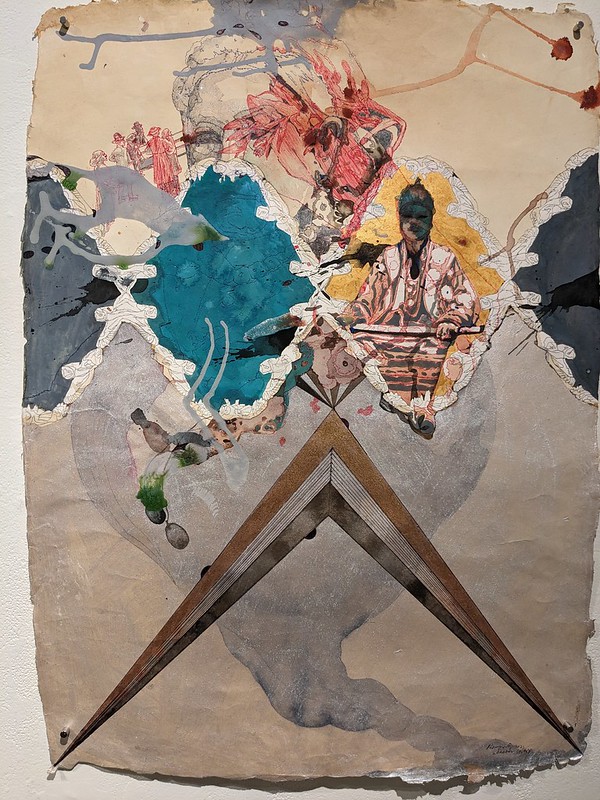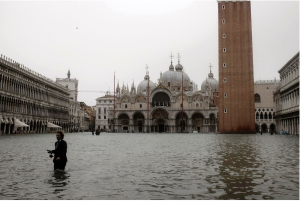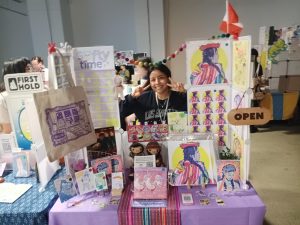Firoz Mahmud: “Early Episodes II” Review
March 13, 2023
Land holds histories, and as we dig deeper into the dirt of the places we come from, we find a cross-section of stories that make up a place. This cross-section is illustrated in Firoz Mahmud’s show, in the Visual Arts gallery through March 16. From afar, these painstaking pen drawings with watercolor, glitter, and other mixed media, appear to be swirling abstractions, perhaps maps of the mind, reminiscent of Jack Whitten’s pyramids and Julie Mehretu’s symbolic amphitheaters. Look closer, though, and various figures and totems from Bangladeshi history appear, traced in a flat, graphic style.
These collages can appear like textbook-illustration mashups, and some have a sense of humor, playing with scale like a Terry Gilliam cartoon. But most are deadly serious, exposing the way colonialism destabilizes histories, turning them on their side where they bleed ink across the page. Mahmud’s use of limited color, focused on vivid silvers, tea paper sepias, and bright reds and blues, makes some pieces feel almost like scaled-up currency from an imagined country, one in which histories are at the surface, not buried by cycles of capitalism and colonialism.
The most successful drawings are the largest, which twirl with a sense of movement; bats and tigers twirling in Zoetrope-esque circles, delicious in their animacy. At smaller scales, the historicism can overwhelm; with fewer referents intermingling, the textbook quality settles into literality. The delight is in the swirl.
I was reminded of a show of large canvases by the artist Nicky Nodjoumi, recently at Helena Anrather gallery; early 1980s dreamscapes of decontextualized, often horrific remembrances the artist made after fleeing Iran. That two artists from across the world would choose such similar visual metaphors to represent the churn of life in their economically oppressed countries speaks to the eternal resonance of collage, where a riot of competing elements can become a visual whole greater than the sum of its parts.












